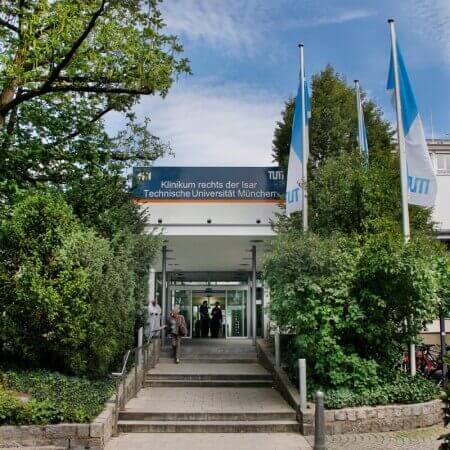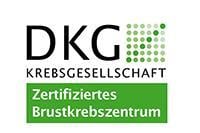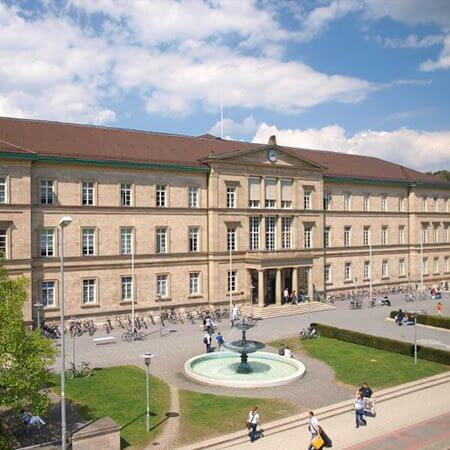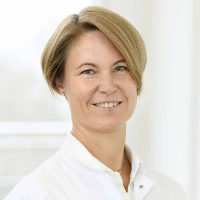Uterine Fibroids (myoma Uteri) — Uterine Artery Embolization: treatment in the Best Hospitals in the World
Treatment prices are regulated by national law of the corresponding countries, but can also include additional hospital coefficients. In order to receive the individual cost calculation, please send us the request and medical records.

Department of Gynecology, Mammology and Obstetrics
The Department of Gynecology, Mammology and Obstetrics offers the full range of services in these fields, providing patients with the optimal treatment based on the very latest scientific advances and innovative technologies. The department's tasks include diagnostics and treatment of all gynecologic diseases and breast pathologies, as well as pregnancy management, childbirth and postnatal care for both mother and baby, elimination of fertility problems in women. The department has modern equipment for invasive and non-invasive diagnostics, three operating rooms equipped with state-of-the-art technology, especially in the field of minimally invasive and robot-assisted surgery, as well as special devices for microsurgery and fetal surgery. A competent medical team consisting of 18 senior physicians, 25 assistant physicians and medical specialists, obstetricians and specially trained nursing staff annually admits approximately 5,000 women for inpatient treatment and provides outpatient medical care for 14,000 patients. In addition, the department has four maternity rooms, in which about 2,000 babies are born annually.







Department of Adult and Pediatric Gynecology, Mammology, Obstetrics
According to the Focus magazine, the Department of Adult and Pediatric Gynecology, Mammology, Obstetrics is included in the ranking of the top German departments specializing in obstetrics and breast cancer treatment! The department offers the full range of diagnostics and treatment of diseases of the female reproductive system, breast pathologies. Also, the specialists of the department provide a comprehensive management of pregnancy, childbirth and postpartum care for both mother and child. Key attention is paid to the treatment of female genital cancers, as well as breast cancer treatment. For this purpose, the department has all the modern therapeutic techniques, as well as its our own innovative developments by the department doctors.







Department of Adult and Pediatric Gynecology, Mammology, Obstetrics
The Department of Adult and Pediatric Gynecology, Mammology, Obstetrics offers high-precision diagnostics and effective treatment of the full range of diseases of the female reproductive system and breast pathologies. The medical facility also employs a competent team of obstetricians, whose responsibilities include comprehensive management of pregnancy, childbirth, and postnatal care for mother and baby. More than 3,000 babies are born in the department's delivery rooms annually. The department cooperates closely with the UniFee Reproductive Medicine Center, which allows gynecologists to treat female infertility together with reproductive medicine specialists. The department's gynecologists focus on women with reproductive system cancers. The medical facility is certified by the German Cancer Society (DKG) as a specialized center. The specialists also successfully treat endometriosis, one of the most common benign gynecologic diseases. In the field of mammology, priority is given to the provision of medical care to women with breast cancer. Doctors perform comprehensive diagnostics, surgical and conservative treatment, and reconstructive plastic surgery after mastectomy. The department's specialists use state-of-the-art technical resources and their professional skills to provide each patient with high-quality medical service.






Uterine fibroid is a tumor that develops from the muscle fibers and connective tissue of the uterus. According to recent studies, its development depends on the state of the immune and hormonal systems of the female body. At the same time, uterine fibroid does not contain cancer cells and is a benign neoplasm that can be successfully treated.
Overview
Uterine fibroids are diagnosed in 25-30% of women over the age of 35, and in 50-62% of cases among 45-year-olds. During preventive gynecological examinations, the tumor is first detected in 1-5% of women. Uterine fibroids can be of different sizes: from a very small tumor to a large tumor that weighs about a kilogram and is easily palpable through the abdominal wall. Sometimes several uterine fibroids can be located in different places of the uterus.
Uterine fibroids are rare in women before puberty, as well as in women in menopause. Most studies confirm the fact that the development of fibroids is associated with hormonal disorders, including increased levels of estrogen. Due to the action of this hormone, the synthesis of muscle fibers of the uterus and the growth rate of endometrial cells increase. However, uterine fibroids can also occur in women with a normal menstrual cycle, that is, without obvious hormonal disorders.
Symptoms
Women need to know that at the onset of the disease uterine fibroids virtually do not manifest themselves. The pathology can be detected only during a preventive examination by a doctor who is specified in obstetrics and gynecology.
As uterine fibroids develop, alarming symptoms begin to appear which require a consultation with a doctor. First, a woman should be alerted by the increase in the intensity of periods and the duration of menstruation.
Heavy menstrual bleeding (menorrhagia) is the most common symptom of uterine fibroids. Bleeding increases gradually, this in many cases can lead to anemia (a decrease in the amount of hemoglobin in the blood). With uterine fibroids, pain occurs in cases of a complicated course of the disease: with twisting of the fibroid neck or necrosis of the uterine fibroid.
Bleeding becomes profuse over time. Many women begin to consider it normal and do not contact a doctor immediately. The danger of menorrhagia is that it can lead to anemia. Heavy periods indicate that due to uterine fibroids the muscles of the uterus contract harder. In addition to menorrhagia, there may be another alarming symptom of uterine fibroids – acyclic uterine bleeding or an untimely period.
During menorrhagia, the mucous membrane of the uterus bleeds due to the proximity to the tumor. Along with bleeding, uterine fibroids are characterized by pain of different character. It is usually located in the lower abdomen and lumbar region. When the circulatory disorders in the fibroid arise, the pain becomes sharp. With a large tumor and its slow growth, women experience an aching pain, usually during the entire menstrual cycle. With the development of uterine fibroids, the work of neighboring organs, i.e. the bladder and rectum, may be disrupted.
If the uterine fibroid reaches these organs, the patient has a feeling of compression of the bladder; urination becomes difficult and frequent. Chronic constipation associated with fibroid pressure and rectal compression arises. Uterine fibroid pressure on the bladder or rectum causes dysfunction of these organs. Sometimes the nutrition of the fibroid node worsens, which can lead to its necrosis. This is accompanied by a feeling of fatigue, fever, and severe pain.
Diagnostics
Making the diagnosis of uterine fibroids is quite simple. When the disease has reached a certain stage, it is possible to establish a diagnosis with the help of a routine gynecological examination, in which it is easy to reveal an enlarged uterus of dense consistency. In some cases, especially if a woman complains of heavy menstrual bleeding, an ultrasound examination of the pelvic organs is required to clarify the diagnosis. The condition of the lymph nodes can be established using hysteroscopy. However, not all patients need hysteroscopy, since this medical procedure has some contraindications and must be performed under intravenous anesthesia.
Medical methods for uterine fibroids diagnostics include:
- Ultrasound scanning of the pelvis
- Magnetic resonance imaging
- Hysteroscopy
- Hysterosalpingography
- Laparoscopy
Treatment
Almost every woman can undergo uterine fibroid embolization (uterine artery embolization), regardless of the size of the tumor and the number of nodes. There are cases in which uterine fibroid embolization is the only method of effective treatment of uterine fibroids with minimal health consequences. For example, in case of relapses after myomectomy – the procedure of removal of myomatous nodes. Uterine fibroid embolization is indicated when there are many nodes and they are located in areas that are difficult to access with surgical intervention. The uterine fibroid embolization procedure is also indicated to patients with heart disease and respiratory failure, who have contraindications for abdominal surgery.
The indications for uterine fibroid embolization are the desire to preserve the uterus, the desire to avoid surgical procedures, and the patient’s desire to preserve the reproductive potential.
Contraindications for uterine fibroid embolization are:
- Presence of uterine fibroid of more than 20-weeks size, multiple nodes
- Subserous uterine fibroids
- Contraindications to angiography, including severe anaphylactic reactions to contrast agents
- Pregnancy
- Borderline and malignant processes in the reproductive system
- Previous radiation therapy of the pelvic organs
- Anomalies of the iliac vessels
Uterine artery embolization is a method that allows doctors to treat a benign tumor without an invasive surgical intervention, preserving the patient's uterus, as well as the ability to become pregnant and carry a child. The essence of the uterine artery embolization is in the blockage of the uterine arteries, which leads to a cessation of the blood supply of myomatous nodes and their gradual substitution with the connective tissue.
The uterine arteries are the main source of blood supply to the uterus. They carry the main volume of blood, which is supplemented by secondary arteries. This happens in healthy myometrium.
When treating fibroids with uterine artery embolization, special microspheres are injected into the arteries. These microspheres are called emboli. They close the lumen of the vessels, blocking the flow of blood to the tumor. In this case, the doctor does not have to treat each node separately.
Very quickly, the emboli are closed with fibrin fibers and thrombotic masses so that they cannot move. The artery is occluded reliably. The blockage of blood supply stimulates the process of replacing the node with connective tissue, i.e. fibrosis. The nodes decrease in size on average 2 times, without the risk of re-growth. Connective tissue remains instead, which does not pose a threat to the patient’s health. The nodes growing into the uterine cavity gradually fall off. Few emboli may move in the vessels supplying the uterus, but this does not affect the patient’s health.
Uterine artery embolization is performed by an endovascular surgeon. The uterine artery embolization procedure does not require general anesthesia, since the vessels have no nerve endings. The introduction of emboli itself is also painless, so local anesthesia at the puncture site is sufficient. To avoid infectious complications and the development of inflammation, the patient receives antibiotics 5 days before the uterine artery embolization procedure and 5 days after it.
A thin catheter is inserted through a puncture in the groin into the femoral artery. It is gradually moved into both uterine arteries. It is important to place the catheter correctly so that the emboli enter the arteries of the myomatous nodes. First, an iodine-based contrast agent is injected through the catheter and an X-ray is performed. This allows the doctor to be sure that the catheter has reached the desired location. For a moment, the patient may feel warmth in the lower abdomen. Then a suspension with emboli is injected through the catheter. Control angiography is performed after the uterine artery embolization. After making sure that the fibroid is blocked, the surgeon removes the catheter from the artery. The puncture site is closed with a special dressing.
The total duration of the uterine artery embolization procedure depends on the doctor's experience. On average, it takes 10-15 minutes. Then the patient is transferred to the gynecological or surgical department for further monitoring, she receives painkillers and necessary symptomatic treatment. As early as 2.5 hours after the uterine artery embolization, the patient can bend the legs, after 6-7 hours – get out of bed and eat.
Despite the seeming simplicity, uterine artery embolization is a technically complex procedure that requires a surgeon to be highly qualified and have narrow professional knowledge. This largely determines the success of uterine artery embolization and the low risk of negative consequences of the procedure.
No additional procedures are required after uterine artery embolization. It allows achieving replacement of myomatous nodes with connective tissue, defeats negative symptoms, normalizes the genitourinary system function, and restores a woman's reproductive function.
Where can I undergo treatment with uterine artery embolization abroad?
Health tourism is becoming more and more popular these days, as medicine abroad often ensures a much better quality of treatment with uterine artery embolization.
The following hospitals show the best success rates in treatment with uterine artery embolization:
- University Hospital Rechts der Isar Munich, Germany
- University Hospital Tuebingen, Germany
- Memorial Sisli Hospital Istanbul, Turkey
- Medicana International Hospital Istanbul, Turkey
- Leverkusen Clinic, Germany
You can find more information about the hospitals on the Booking Health website.
The cost of treatment with uterine artery embolization
The prices in hospitals listed on the Booking Health website are relatively low. With Booking Health, you can undergo treatment by uterine artery embolization at an affordable price.
The cost of treatment varies, as the price depends on the hospital, the specifics of the disease, and the complexity of its treatment.
The cost of treatment with uterine artery embolization in Germany is 15,617-26,603 EUR.
The cost of treatment with uterine artery embolization in Turkey is 10,782-11,202 EUR.
You might want to consider the cost of possible additional procedures and follow-up care. Therefore, the ultimate cost of treatment may differ from the initial price.
To make sure that the overall cost of treatment is suitable for you, contact us by leaving the request on the Booking Health website.
How can I undergo uterine artery embolization abroad?
It is not easy to self-organize any treatment abroad. It requires certain knowledge and expertise. Thus, it is safer, easier, and less stressful to use the services of a medical tourism agency.
As the largest and most transparent medical tourism agency in the world, Booking Health has up-to-date information about uterine artery embolization in the best hospitals. We will help you select the right clinic taking into account your wishes for treatment.
We want to help you and take on all the troubles. You can be free of unnecessary stress, while Booking Health takes care of all organizational issues regarding the treatment. Our services are aimed at undergoing treatment with uterine artery embolization safely and successfully.
Medical tourism can be easy! All you need to do is to leave a request on the Booking Health website, and our manager will contact you shortly.

